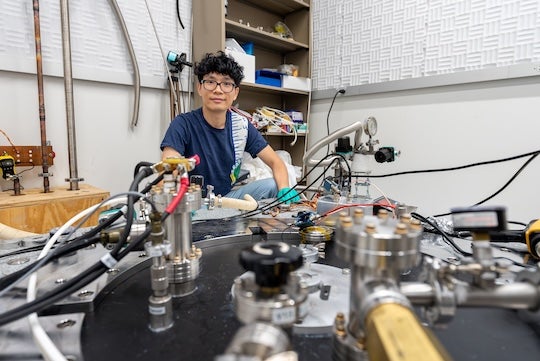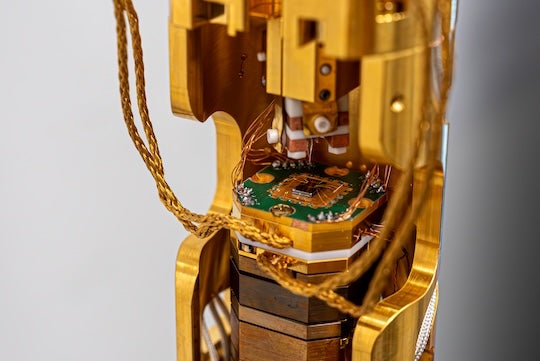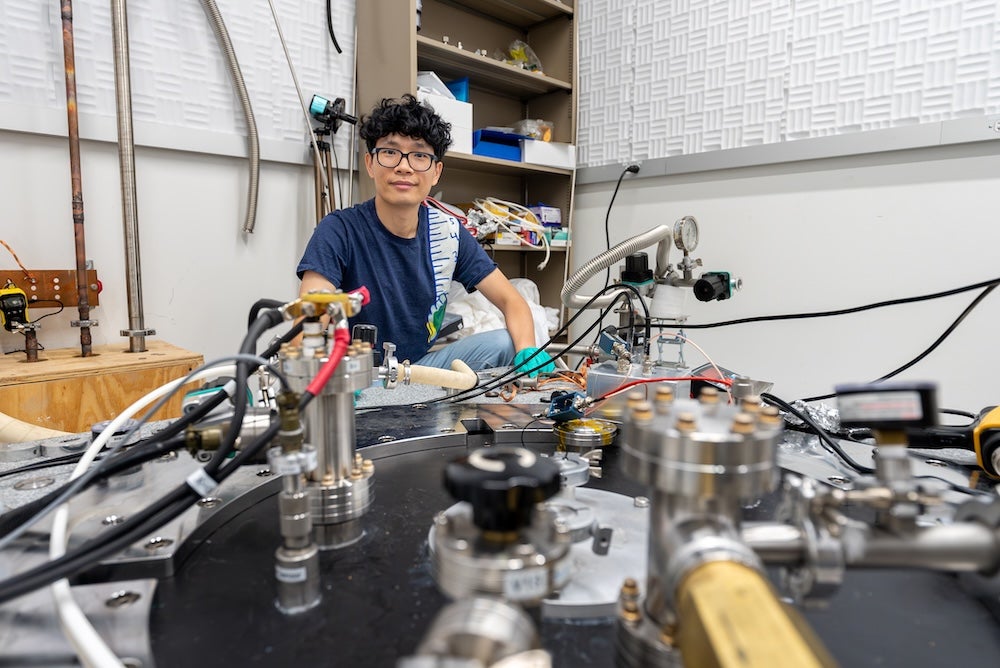A few years ago, physicists were surprised to learn that stacking and subtly twisting two atomically thin layers of an electronic material like graphene creates a pattern that changes the material’s properties and can even turn it into a superconductor. This superimposed grid, like what would emerge if two window screens were laid slightly askew, is called a moiré pattern.

But why stop there? It turns out adding a third layer, with each layer twisted at slightly different angles, produces even more complex interferences known as supermoiré patterns (a.k.a. moiré of moiré). The supermoiré pattern induces profound changes in how electrons move through the material, but until recently, scientists have had trouble measuring exactly what changes occur and why.
A new study by applied physicists at Harvard University’s John A. Paulson School of Engineering and Applied Sciences (SEAS) along with Rice University’s Yonglong Xie, published in Science, used a custom-designed microscope to examine supermoiré patterns in trilayer graphene more deeply than ever before. The microscope allowed them to observe previously unseen states of matter, where electrons became trapped or formed unusual groupings, altering the material’s overall electronic behavior. The findings open new possibilities for studying layered materials with finely tuned properties.
“These results not only deepen our understanding of how electrons conspire to form novel quantum phenomena but also suggest a new, universal design principle for an entirely new class of quantum materials,” said Xie, assistant professor of physics and astronomy.
Research challenges assumptions about moiré structures
The ultralong supermoiré patterns visible in twisted trilayer materials had been considered by some to be imperfections of little consequence amid the simpler moiré structures that emerge when only two layers are present.
The new study challenges that assumption and introduces the concept of supermoiré engineering — how that additional pattern-on-pattern could be used as a probe to uncover the overall properties of these special materials. The supermoiré pattern is relatively large and can be easily controlled, introducing potential for designing exotic new materials for thin electronics and other applications.

“Going into this study, if you asked me if I thought the supermoiré was good for anything, I probably would’ve said it’ll just be a nuisance,” said former SEAS graduate student Andrew Pierce. “But it turned out to give us new information about the system — information that would’ve been hard to get with other techniques besides ours.”
Microscope with nanometer resolution
Understanding of supermoiré patterns has been limited by the fact that the patterns can vary significantly across different regions in a sample. To solve this problem, the researchers used their single-electron transistor microscope, developed at SEAS, that’s capable of examining materials with spatial resolution of about 100 nanometers and is sensitive to perturbations in individual electrons. A sharp needle with a sensor at its tip scans the sample and captures these details.
The microscope allowed the team to detect very slight changes in moiré and supermoiré patterns in two- and three-layer graphene and the resulting electronic properties per pixel. By analyzing the correlations between these quantities, they gleaned new insights into how the supermoiré patterns in particular influence the entire system.
“This additional long-range pattern that until now was largely overlooked could be used as a probe to understand the material properties of the parent material,” Xie said.
The results could enhance understanding of quantum phenomena, including the lossless conduction of electrons known as superconductivity, and lead to next-generation materials that contain multiple tunable properties.
The paper was co-authored by Jeong Min Park, Daniel E. Parker, Jie Wang, Patrick Ledwith, Zhuozhen Cai, Kenji Watanabe, Takashi Taniguchi, Eslam Khalaf, Ashvin Vishwanath and Pablo Jarillo-Herrero. The Army Research Office, Gordon and the Betty Moore Foundation, National Science Foundation CAREER Award and Robert A. Welch Foundation sponsored this study.

